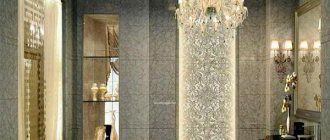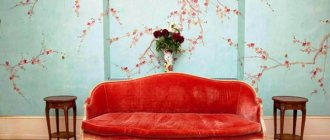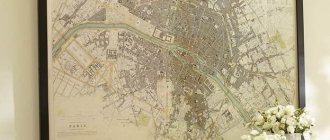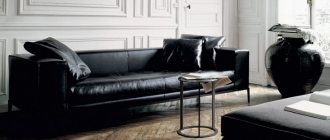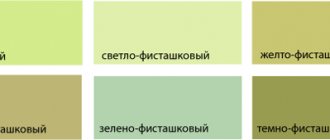Catalog Antique candlesticks and candelabra made of bronze>>>>>
Several centuries ago, candlesticks and candelabra were common items in any home. In the era of electric light bulbs, they acquired a completely different meaning. An antique forged item is a decoration for the home. This is a sign of high taste, sophistication and aesthetics. And we don’t even need to mention the atmosphere of magic that the muted light of a candle gives.
A candelabrum is also a candlestick, but only with a characteristic design. It has several branches, because of which you can put several candles in one stand at once.
photo. candlestick with glass insert
Like any cult item, candlesticks have an interesting history.
What do we know about the appearance of candlesticks?
The history of its appearance goes back to the very depths of centuries, when our ancestors huddled in caves around fires. The first candles appeared during the Stone Age. Back then, depressions in caves and stones were used as candle stands, and candles were made from animal fat. As you can see, a lot has changed since then. From century to century the form evolved at lightning speed. They began to be made from stones, pieces of metal, wood and other means. But soon the most important question arose - about appearance.
The first beautiful candlestick: where was it born?
There is one interesting legend that is associated with the appearance of the first candlestick, the appearance of which resembles modern decorative samples.
The people of Egypt believed in the sun god Ra, who came in the most difficult times to help the people survive. He first appeared from a lotus flower in which a flame was burning. In honor of him, the Egyptians began to make candlesticks in the shape of this flower. They were made from reed, clay and wood, and the top was decorated with leaves. Such candlesticks were used not only as lamps, but also as important objects for rituals.
Besides the Egyptians, the first to make unusual candlesticks were the Etruscans. They made tall candle holders from bronze. And many objects were made in the shape of animal paws.
The first candelabra are found in the Etruscan culture. Then they were stands made of wood or metal, 1.6 meters high. The rod was attached to a special leg made in the shape of an animal paw. And in the upper part there was a rosette with 4 candlesticks.
photo. antique candelabra
Antique candlesticks in Ancient Greece and India
In the Antikzon store you will see the most interesting types of antique candelabra in the Greek style. Famous mythological characters, gods, grape leaves and ornaments - all this will decorate your living room or bedroom. Greek style is immortal. The harmony of forms, deep symbolism, and fine lines evoke admiration among both collectors and lovers of rare antique candlesticks.
But despite the Greek theme, many candelabra were made by masters of the 19th century. made of bronze. The Greeks made candlesticks from red and white clay, then the objects were fired and covered with glaze.
No less interesting are the objects found in India. Here candlesticks were made from ivory and sugar cane. For connoisseurs of oriental motifs, we recommend paying attention to the “Cobra” candlestick, made in India in the 18th century. It is made of copper in the shape of a cobra and decorated with traditional Indian designs. This is an ancient ritual temple candlestick, which depicts the cosmic snake Entente. Such a sample will be of interest not only to connoisseurs of rare antiques, but also to lovers of Eastern mythology.
Photo. antique candlestick in the shape of a snake
Candelabra in the Renaissance
The turning point in the creation of candlesticks was the Renaissance. Then the importance of the beauty of surrounding objects rapidly soared. People began to attach great importance to decoration, and with it, the decoration of accessories. During the Renaissance, candelabra finally acquired their decorative significance, becoming a popular decoration. Craftsmen began to decorate them with figures of people, animals, Greek gods, and floral patterns. And from the 14th to the 17th centuries, copper candlesticks appeared in all rich houses.
Photo. Antique silver plated candlesticks
Higher quality materials were used to produce items. Bronze was the most popular material at that time. Due to its strength and resistance to high temperatures, they began to create elaborate, sophisticated candlesticks and candelabra from it. Objects were also created from metal, brass, silver and even gold. They decorated not only the chambers and halls of palaces, but also squares and streets.
Candlesticks have become of interest to many artists and sculptors. They were decorated with relief carvings, sculptural compositions, and precious stones. Biblical and mythological motifs, landscapes, angels and monograms were often used as design motifs.
Porcelain candlesticks decorated with gilding and designs are considered one of the most luxurious items of those times. Only royal families and famous people could afford such items.
Original creativity of contemporaries
Candelabrum – stand for candles, lamps, incense
One of the ancient Egyptian myths tells how a lotus flower grew on a hill that emerged from the primeval chaos, from which the solar god Ra was born. He defeated the forces of darkness, dispelled darkness and freed human hearts from the fear of it.
The motif of a flower giving birth to light, and with it life, has firmly entered the field of decorative and applied art, resulting in the artistic image of a candlestick. The shape of a flower cup with a bent corolla was given to the sockets - candle sockets - from ancient candlesticks and candelabra, preserving echoes of ancient ideas about the origin of life on earth, which began with the separation of darkness and light.
Magnificent ancient candelabra can be seen in the British Museum in London, in the Louvre in Paris, in the Munich Glyptotek, in Roman collections (the so-called Barberina candelabra in the ancient collection of the Vatican), Florentine and Neapolitan.
During the Renaissance, candelabra became richer in design; for example, the shaft was decorated not only with leaves and ornaments, but also with small figures. Such bronze candelabra have been preserved in large numbers in Italy, for example, in Venice. In the 18th century, candelabra often began to be made of iron, sometimes in luxurious Rococo style forms; they were used to illuminate halls, streets and squares; in the 19th century, wrought iron was replaced by cast iron.
In the 16th and 17th centuries they were made of silver, bronze and tin, in the 18th century. began to use porcelain.
Modern candlesticks and candelabra are used more often to decorate the interior.
Interior design tips from Alexandra Komolova.
“For me, a candlestick is an indispensable attribute of the final interior decoration. Candelabra can decorate the interior without a candle, but remember that first of all you buy a candlestick, and then a candle.
So, bronze candlesticks are suitable for a classic interior. More specifically, the Baroque style is well complemented by candlesticks with the shapes of people and animals, and fancy curls. And crystal models will suit the Art Deco style. With multi-colored glass candlesticks, I add brightness to the interior or support some color present in the draperies. It is not difficult to change such decorations, achieving a completely different interior mood. My advice - don't be shallow! One tall floor candelabra is better than seven candlesticks for one wick. The abundance of small objects burdens the interior.”
Share this post for your friends:
↑How to install such buttons?↑
Friend me:
There are no other posts on this topic.
Candlesticks in the 18th century
During this period, candlesticks made in the shape of tulips were popular. They were made of silver or gilded bronze. Floral ornaments were often used as decorations - one of the most famous motifs in art during the reign of Louis 15. And the shape of the candlestick directly copied the lines of a flower: there were leaves at the base, the stem imitated a flexible stem, the cup resembled an open bud.
Photo. Antique candlestick - in the shape of a tulip
You can find a candlestick in the shape of a tulip in our antique store. For example, check out the antique French "Vine" piece, which dates back to the 19th century. The candlestick is made in the shape of a tulip and stylized with a grapevine. The material is bronze, and the style of the model is rococo.
photo. antique candlestick in the shape of a Vine
At the end of the 18th century. simple symmetrical shapes replaced floral patterns. Most often at this time, low candlesticks with simple decoration in the form of alternating beads and lines, reminiscent of columns, were used. They are designed for one candle and are placed on a strong round or square base. The same style of candlesticks was also relevant at the beginning of the 19th century.
In addition to tulip candlesticks and columns, in the 18th century. they made candlesticks and candelabra from porcelain. More often this material was used as inserts in silver and bronze candle holders. But there are some items made entirely of porcelain.
The 18th century is also interesting because at that time candelabra began to be made not only from expensive metals, but also from iron. Typically, iron candle holders were used to illuminate streets and squares.
Photo. Antique candlestick in the shape of columns
Classic candlestick
In principle, this is an elegant thing that was previously made exclusively from silver or bronze, red copper or gold: now their imitation from bone and even earthenware with wood is not excluded. In terms of the way they are loaded with decorations, wall candlesticks are in last place: after all, this is a wall , on which you cannot hang a mammoth! This neutral form is still elegant.
The forged version stands separately from other types. This is a work of art, and quite modest, but it reflects the soul of the blacksmith who picked up the hammer. Individuality is the main feature of such candelabra.
How candlesticks have changed since the 19th century
The Renaissance is remembered for the fact that candelabra were made with luxury and cost. Therefore, only rich people could afford such decorative items. The 19th century became somewhat revolutionary, as candlesticks began to be made not only from bronze and precious metals, but also from cast iron. This metal has many advantages: strength, reliability, and most importantly, affordable price. Candlesticks also gained popularity among ordinary people, because everyone could afford a cast iron item.
By the middle of the 19th century. The art of making candlesticks takes on new forms. Objects begin to be made from marble and alabaster. And just a few decades later, a new peak in fashion begins: candle stands are made of transparent and colored glass, crystal and marble. Candelabra and taller candlesticks were used either as interior decorations or during dinner.
In everyday life, small candlesticks with wide trays in the form of a saucer with a handle were most often used. Sometimes it was made in the shape of a flower or leaf or decorated with ornaments. They are not only beautiful, but also very convenient, since drops of wax do not fall on the furniture, but are collected on a tray. Illustrative examples of such objects of art include the bronze “Autumn” candlestick, made in France at the end of the 19th century, the “Breton” candle holder made of brass in the 19th century, the “Trowel” candlestick, made in the neoclassical style, and other models.
photo. antique candlestick in the shape of a saucer
The early 20th century Max Le Verrier candle holder deserves attention. This is a very rare item, made according to the model of the famous sculptor Max Le Verrier. The base of the candlestick is made in the shape of an elongated saucer with a shell relief.
Photo. antique candlestick by Max Le Verrier
During the same era, it became popular in France to make the stems of candles and candelabra in the form of human figures. Most often, women in ancient clothes, ancient Egyptians, and mythical characters were used as images. Sometimes the figures stood on marble bases, and in their hands one could see a candelabra decorated with vines or other ornaments. Often in antique candlesticks you can find a whole mythical plot, with all the details and symbolism worked out.
Photo. antique candlestick - female figure
An excellent example of this style is the paired candlestick from our “Bacchus and Ariadne” collection, made in France in 1850 – 1870. The candlesticks date back to the era of classicism and depict the famous mythological story of the love of Dionysus-Bacchus and Ariadne.
Photo. antique candlestick Bacchus and Ariadne
It is interesting that in the second half of the 19th century. The ancient girls were replaced by chubby-cheeked cupids holding flowers as candle stands in their hands. And in addition to people, figurines of horses, dragons and birds of various types began to be used more often. Among the popular artists who create candlesticks with zoomorphic motifs, it is worth mentioning Antoine-Louis Bari.
photo. antique candlestick Cupid
The sculptural image of dolphins on candelabra is considered especially exquisite. It is interesting that such fashion was in the second half of the 19th century. often used in other interior items, as well as in landscape architecture. The trend of decorating various objects with dolphins first gained popularity in France. Then it spread to Russia, where famous masters such as Carl Faberge and Felix Chopin often liked to depict dolphins. The candlestick in the shape of a dolphin is a very rare, skillfully executed model, made in France in the mid-19th century. It is made of bronze with colored patination. The base is made in the shape of a hexagonal star, and the rod is in the shape of a dolphin. The candlestick belongs to the Rococo style and will be a good addition to a collection of antiques.
Photo: antique candlestick-dolphin
In general, the 19th century is characterized by a peak in the variety of candlesticks and candelabra. Rococo, Empire, and Renaissance styles were popular. Many antique candlesticks in our store date back to the 19th century. Among them you will find samples from France, England and Germany.
The main types of candlesticks today
As you can see, from the appearance of the very first candlestick to the present day, objects have undergone many changes. From simple stone candle stands they have turned into works of art. And despite the fact that the era of candles is long behind us, antique candlesticks and candelabra are increasingly valued.
There are several types of antique candlesticks:
- Forged candlesticks and candelabra. Made of metals with elegant forging items. Most of the items are made of bronze. There are also individual items made from tin. Candlesticks and candelabra decorated with gilding and silver are valuable. Such accessories will decorate classic interiors. They have a number of advantages: they are easy to clean from wax and paraffin, do not break and are able to retain their original appearance for a long time.
- Porcelain candlesticks. Due to their fragility, they are less popular than forged items. However, their value does not decrease in any way. Among the porcelain candlesticks you will find a rare piece called Meissen, made in Germany in the first half of the 20th century, and a hand-painted porcelain dish with silver "Rosenthal" dating from 1936.
photo. antique porcelain candlestick
With your own hands
It is possible to make a forged candlestick with your own hands. To create a bright product for the interior, the artist will need to have the skills of a blacksmith and welder. Knowledge in the field of forging will be required for the manufacture of elements, and welding - for assembling parts into a single composition. Forged elements can also be purchased in finished form; many companies sell them. The master has the opportunity to create any product from the purchased parts.
Reference. You can acquire the relevant knowledge yourself, i.e. through studying materials from the Internet and books, as well as while studying in secondary and higher educational institutions.
Performers who prefer to produce all the component elements of an object with their own hands will also need blacksmith equipment and blacksmith tools.
Forged candlestick. Blacksmith Dmitry Ptitsyn worked
Some tips for choosing candlesticks and candelabra for your interior
A beautiful antique candelabra will decorate almost any style: from loft to vintage. It combines especially luxuriously with a fireplace, crystal chandeliers, and natural wooden furniture. By the way, it is not at all necessary to use candles. A candelabra is a separate piece of furniture.
To choose an antique candelabra for interior decoration, you should be guided by the general style of the room. For example, in a hall decorated in the Baroque style, a candlestick with figures of people, animals, as well as floral ornaments will look good.
Photo. antique candlestick - floral ornament
If your interior is in art deco or empire style, then you can safely decorate it with a candlestick with crystal. A model called “Napoleon 3” will fit perfectly into such a room. The composition includes two candlesticks made in the shape of columns and decorated with crystal prisms. The specimen dates back to the 19th century.
Photo. antique crystal candlestick
Porcelain and ceramic candlesticks will fit into classic and modern interiors.
By the way, for ultra-modern trends such as hi-tech, minimalism and modernism, an antique candelabra can also become an original decoration. Many designers note that sometimes a bright contrasting element from another genre looks very creative and laconic. In any case, don't be afraid to experiment. In our antiques store you can buy a candlestick or candelabra of quite different styles, sizes and shapes.
Types of interesting and beautiful metal products
It is almost impossible to show and analyze all types of forged candlesticks, since there are a huge number of types of products. Metal processing through forging allows you to create both standard and exclusive items , the number of which is endless. Therefore, the main types of candlesticks are presented below.
Wall, floor and tabletop
The main criterion for dividing products into separate categories is the type of design. Wall sconces are the most popular type. They save space and can be located at different heights, thereby ensuring safety in the house where children live.
Objects on the wall have a wide variety of appearances, sometimes they resemble a sconce or a lantern, act as a panel or painting, and acquire intricate configurations, becoming the central detail of the interior.
Forged candlesticks. Author Ruben Zvonkovsky
Products of this type can be placed on both sides of the bed, mirror, fireplace, artwork : paintings, sculptures. The objects perfectly illuminate the staircase, making movement along the steps comfortable, and the space takes on a medieval touch. This impression is especially enhanced if the staircase is also made of metal. Placing a candlestick in the living room or hallway will demonstrate to guests at home the refined taste of the owners.
Table candlesticks are also popular . They have both small sizes and act as a decorative element, and quite significant dimensions and carry out their direct function. Items of the first category can be presented as a gift to a loved one or as an interesting souvenir to a friend or boss. Products of the second group can have several candles and serve as an excellent alternative to a table lamp in the office or a lamp on the bedside table.
Forged candlestick. Author Ruben Zvonkovsky
Floor products are much less common. Their installation requires significant space; the room should not be cluttered, “oversaturated” with furniture and small objects. To fully appreciate the beauty of a forged floor candlestick, it should be placed in a spacious room , in free space. This way, hosts and guests will have the opportunity to enjoy the flames of candles that dance on intricate metal patterns.
Forged floor candlestick. Hotiron Photos
Form
Forged candlesticks have a variety of shapes. Products in the form of plants, trees and flowers, fictional and natural animals, and inanimate objects are in demand.
Forged insect candlestick. Photos of Perseus
Candlesticks with geometric shapes attract attention, have a laconic design, are suitable for interiors made in modern styles, such as high-tech, and are an excellent addition to a minimalist interior.
Forged wall candlestick of geometric shape. Photo Metal Decor Workshop
A designer or metal artist has the opportunity to develop a model of a non-standard shape . The products have an arbitrary configuration, which makes them difficult to compare with anything, and therefore difficult to name.
In the form of a rose
have a natural and lively design . The texture of the buds and leaves is very reminiscent of the interlacing of veins of living flowers. Candlesticks of this configuration are often small in size , i.e. life-size, placed on a table in the bedroom or kitchen. Such a cute flower with a place for a candle will decorate any interior and take its rightful place in the house.
Vintage
Painting the finished product is a mandatory production stage. Candlesticks made in black, white and other colors are often complemented with patina .
The patination process involves applying a special coating that imitates gold, bronze, copper, etc. This decoration technique gives the candlestick a touch of antiquity and a complete design. Therefore, when encountering information about antique-made products, one can come to the conclusion that the item is supplemented with patina.
Hot and cold forging, handmade and stamping, exclusive and simple projects
The production of metal candlesticks is carried out using hot and cold forging technology. Each method has distinctive features, which in turn endows the finished product with certain characteristics.
Hot forging is a manual processing of metal that requires the master to have knowledge, imagination and physical strength. A blacksmith must strictly follow safety precautions, be able to give workpieces the desired shape using artistic forging operations, and understand the styles of products. Painstaking and complex work with metal results in the high cost of such projects that are completely exclusive in design.
Reference. The process of creating openwork patterns from rough metal can be seen at forging master classes.
Cold forging is the mechanical processing of workpieces performed on special machines. In practice, this technology is not forging, but bending and pressing of metal. Elements processed in this way, called stamped ones, have a standard design, but the use of equipment allows you to save time and resources. As a result, the products do not have a unique design, but have an affordable price for many customers.
The role of candelabra in decor today
Since the advent of electricity, the original role of candlesticks has lost its relevance. However, these beautiful products have literally been reborn, taking pride of place in the decoration of our homes. They are increasingly used in interior design, for stylistic photo shoots, during family feasts, romantic dates and simply for beauty.
Photo. antique candlesticks
Note the 19th century candlesticks. They are able to instantly transform even the simplest classic interior. And for design in the Rococo or Empire style, such an attribute is literally a godsend. If you are thinking of making a bright accent in your interior, surprising your guests, or simply adding to your collection of antiques, we recommend that you take a closer look at each candlestick in our catalog. Perhaps this is where you will find what you have been looking for for a long time.
Candlesticks and candelabra buy at Antikzon Antique Store
The Antikzon store has a large collection of antique candlesticks and candelabra from the 18th to 20th centuries from England, France and Russia, which are of great artistic and cultural interest. The antique candelabra and candlesticks presented in our collection are made of various materials, antique bronze and porcelain, crystal, and made by masters of their era. Our consultants will find a worthy gift and interior decorations, tell you about the history of an old candelabra or antique candlestick, and make delivery throughout Russia.
Catalog Antique candlesticks and candelabra made of bronze>>>>>
Nazca geoglyphs
The Andean candelabra and the Nazca drawings differ in the technique of execution, which suggests that there were at least 2 ancient cultures that created them. To date, 30 drawings and 788 lines and geometric shapes have been discovered in the desert.
The trident on the peninsula is presented in a single copy, and since a pottery workshop from the same time as the drawing was found not far from it, it can be assumed that this is the work of the hands of the inhabitants of ancient Paracas.
